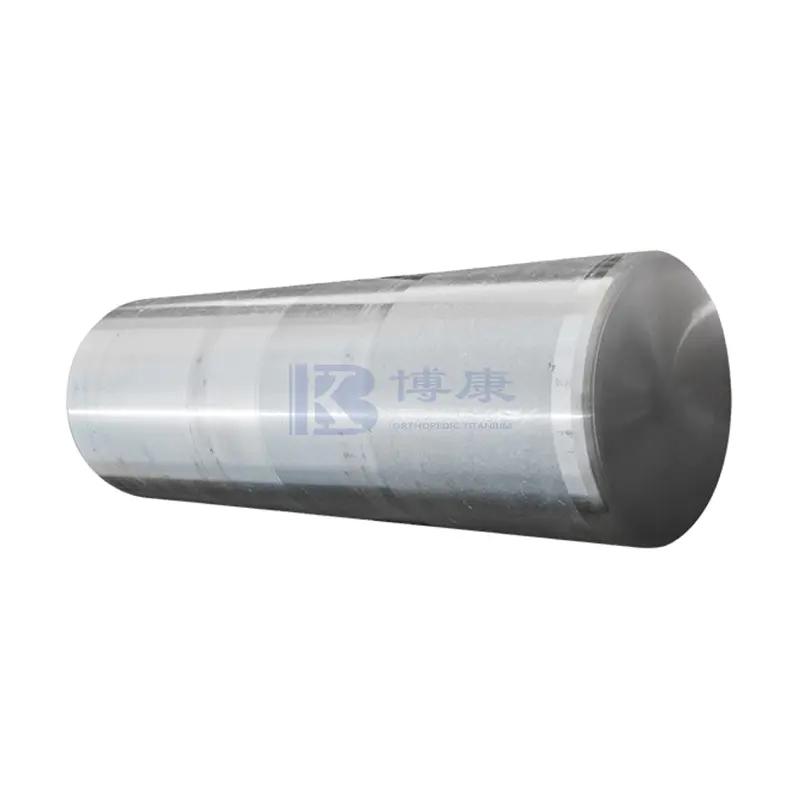Verifying the corrosion resistance of corrosion-resistant titanium ingots in practical applications is a key step to ensure their reliability and long-term performance in harsh environments. Titanium and its alloys are widely used in marine, chemical, aviation and other fields due to their excellent corrosion resistance. However, the corrosion mechanisms in different environments are different, so the corrosion resistance of titanium ingots in specific applications must be verified through systematic testing and evaluation.
1. Laboratory corrosion test
Laboratory corrosion testing is the basis for evaluating the corrosion resistance of titanium ingots. Common test methods include:
Static corrosion test: Place the titanium ingot in a corrosive medium (such as acidic solution, salt spray, etc.) and observe its surface changes. Commonly used solutions include sulfuric acid, sodium chloride, etc., which simulate the corrosion conditions in marine or industrial environments. By observing the mass changes, surface damage or oxide layer formation of the titanium ingot, you can get a preliminary understanding of its corrosion resistance.
Electrochemical test: The electrochemical corrosion behavior of the titanium ingot is evaluated by measuring the polarization curve and corrosion current. In this way, the corrosion rate of the titanium ingot in a specific corrosive medium can be quickly obtained to evaluate its corrosion resistance.
2. Long-term corrosion test
Laboratory tests can usually only provide corrosion information of titanium ingots in the short term, but the corrosion process in actual applications is long-term. Therefore, long-term corrosion tests are an important means to verify its corrosion resistance. Such tests usually include:
Accelerated corrosion test: By controlling environmental factors such as temperature and humidity, simulate the harsh environment that titanium ingots may encounter during long-term use. Accelerated corrosion tests can obtain the corrosion performance of titanium ingots in long-term applications in a relatively short period of time, providing data support for reliability evaluation in actual applications.
Field exposure test: Expose the titanium ingots to the actual application environment and monitor their surface changes for a long time. By comparing the corrosion conditions in different time periods, its corrosion resistance in actual applications can be comprehensively evaluated.
3. Microscopic analysis and surface detection
Microscopic analysis of the surface of titanium ingots through scanning electron microscopy (SEM), energy spectrum analysis (EDX) and other technologies can provide a deep understanding of its corrosion resistance. The detection content includes:
Thickness and uniformity of oxide film: The corrosion resistance of titanium mainly depends on the oxide film formed on its surface. By measuring the thickness and uniformity of the oxide film, its corrosion resistance can be judged.
Corrosion product analysis: By analyzing the corrosion products on the surface and cracks of the titanium ingot, it can be revealed whether the titanium ingot has undergone local corrosion or crack expansion, thereby affecting its overall corrosion resistance.
4. Comprehensive evaluation of corrosion resistance
The corrosion resistance of the titanium ingot is comprehensively evaluated by considering the results of laboratory tests, long-term tests and microscopic analysis. The following factors need to be considered during the evaluation:
Environmental factors: The corrosion environment in different application fields varies greatly, and the evaluation must be combined with the actual application scenarios of the titanium ingot.
Titanium ingot processing technology: The alloy composition, heat treatment process and other factors of the titanium ingot have an important influence on its corrosion resistance. When evaluating, it is necessary to combine the actual situation of its production process.
Service life prediction: Based on the corrosion rate and other evaluation data, the service life of the titanium ingot in a specific environment is predicted to provide a reference for practical application.
Through systematic testing and evaluation, combined with laboratory corrosion tests, long-term exposure tests, microscopic analysis and other means, the corrosion resistance of the titanium ingot in practical applications can be fully verified. This process not only provides a scientific basis for the application of titanium ingots, but also provides important data support for the optimization design of titanium ingots, thereby ensuring their long-term stability and reliability in actual use.

